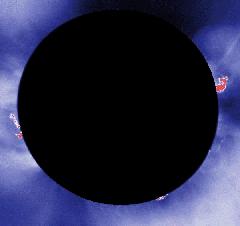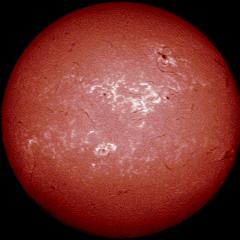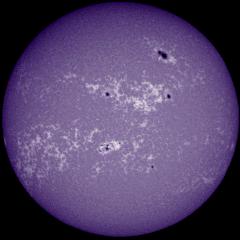 |
|
+ Home | ||

|
||||
| + Solar Cycle Prediction | + Magnetograph | + The Sun in Time | + The Hinode Mission | + The STEREO Mission |
The Chromosphere
|
The chromosphere is an irregular layer above the photosphere where the temperature rises from 6000°C to about 20,000°C. At these higher temperatures hydrogen emits light that gives off a reddish color (H-alpha emission). This colorful emission can be seen in prominences that project above the limb of the sun during total solar eclipses. This is what gives the chromosphere its name (color-sphere).
| ||
|
When the Sun is viewed through a spectrograph or a filter that isolates the H-alpha emission, a wealth of new features can be seen. These features include the chromospheric network of magnetic field elements, bright plage around sunspots, dark filaments across the disk and prominences above the limb. The chromosphere is the site of activity as well. Changes in solar flares, prominence and filament eruptions, and the flow of material in post-flare loops can all be observed over the course of just a few minutes. |
| ||
|
The chromosphere is also visible in the light emitted by ionized calcium, Ca II, in the violet part of the solar spectrum at a wavelength of 393.4 nanometers (the Calcium K-line). This emission is seen in other solar-type stars where it provides important information about the chromospheres and activity cycles in those stars. |


